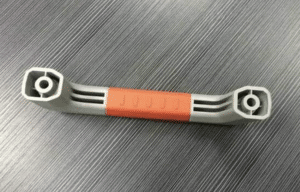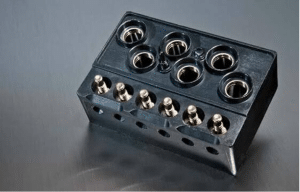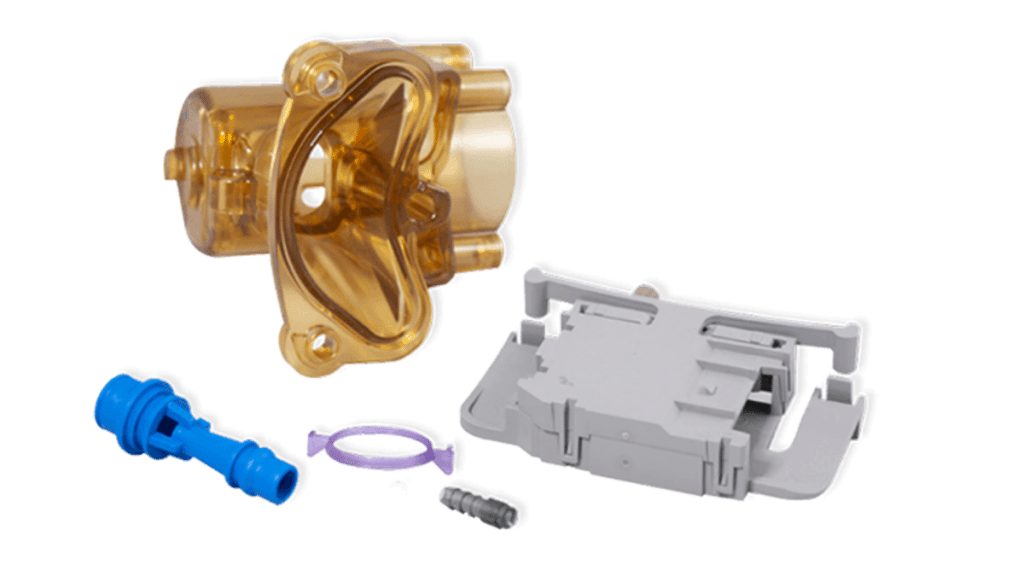Low-volume injection molding is a manufacturing process where molten plastic is injected into a mold cavity and allowed to cool, forming complex shaped parts. It produces fewer numbers of parts. These are in the range of hundreds to a few thousand units. It utilizes automation and advanced technologies to manufacture injection molded components economically and flexibly, even at low production volumes. It proves suitable for prototyping, initial market testing, and specialized applications possessing low demand.
What Are the Benefits of Low-Volume Injection Molding?
Low-volume injection molding has lots of perks for manufacturers. Even at small volumes, it provides a cost-effective way of manufacturing while keeping quality high.
-
Cost Efficiency
Using 3D-printed molds and automation reduces the initial tooling costs involved. Additionally, less material is wasted as the molds can be optimized to fill complex shapes with minimal excess material. Low-volume machines also consume less energy compared to traditional high-volume machines.
-
Flexibility and Speed
The quick turnaround times allow manufacturers to test designs, make modifications, and launch products much faster. Production can start within days or weeks compared to months required by conventional metal molds. Modifications and customizations to the mold design can also be done easily and speedily to accommodate changes.
-
Quality and Consistency
Despite lower volumes, quality standards are maintained through process control and automation. Consistency is assured between batches as production does not depend on manual labor. Parameters like temperature, pressure, and cooling can be precisely regulated.

When to Use Low-Volume Injection Molding
Low-volume injection molding is very versatile. Some conditions businesses can choose it for include:
-
Product Prototyping and Initial Market Testing
Producing initial prototypes is an important phase of any new product development process. Low-volume precision injection molding provides an affordable option for manufacturing prototypes to test designs and gather feedback before investing in costly mass-production tooling. It allows testing different design concepts quickly to make iterations. Manufacturers can also use prototypes to gauge market demand for their product before committing to larger volumes.
-
Catering to Niche Markets or Specialized Products
Low-volume injection molding is ideal for producing specialized components and products that are in high demand within niche markets such as medical devices and aerospace parts. This manufacturing technique allows for the continuous production of unique and precision parts, even at low volumes. Moreover, it effectively caters to industries that require rapid customization and version control, such as the manufacturing of consumer electronics accessories.
Different Types of Low-Volume Injection Molding
There are various types of low-volume injection molding, each with its own advantages depending on timelines, design change needs, and production quantities required. The different types available are rapid injection molding, bridge tooling, and on-demand manufacturing.
-
Rapid Injection Molding
This approach uses 3D-printed molds to produce prototypes extremely quickly, within a week. While fast, 3D molds have limitations in complexity and quality compared to metal molds.
-
Bridge Tooling
It is intended for transitional use with a design undergoing changes before large-scale production. 3D-printed molds of this type are adaptable to modifications during the refinement cycle.
-
On-Demand Manufacturing
This produces parts individually based on incoming customer orders, minimizing inventory costs through a just-in-time process. Automation and 3D printed molds allow efficient production of variable or low-volume product runs without lengthy setup times of batch manufacturing.

Choose a Reputed Injection Molding Service Provider: HPrapid.
It’s important to choose a reliable, reputed service provider for low-volume injection molding. The renowned brand HPrapid offers a comprehensive solution for prototyping and low-volume production needs. Its injection molding service produces high-quality injection molded parts using 3D printed tooling for a faster turnaround. The company specializes in supplying accurate custom injection molded components across industries through its experienced team and modern technologies.
HPrapid offers dependable, high-precision plastic injection molding services. Using automated equipment and 3D printed molds, its experienced team can quickly produce high-quality custom injection molded components. Capabilities include:
- Wide range of thermoplastics catering to specific industrial needs
- Enhancing aesthetics and functionality through polishing, pad printing, silk screening, custom painting, etc.
- 3D printed tooling and CNC machinery allow for maintaining tight tolerances for specialized precision parts
- In-house material testing and quality control using equipment like CMM ensures conformance to requirements
- Dedicated project resources ensure on-time and on-budget delivery through close coordination
Conclusion
Low-volume injection molding offers unmatched flexibility and cost-efficiency, revolutionizing manufacturing for smaller production runs. From rapid prototyping to serving niche markets with specialized products, its advantages are undeniable. With various molding methods available, quick iterations and adjustments are possible. Choosing a reputable provider like HPrapid is crucial, given their expertise in delivering high-quality custom molded components. To discuss your low-volume injection molding needs and get a free quote, contact HPrapid today.

